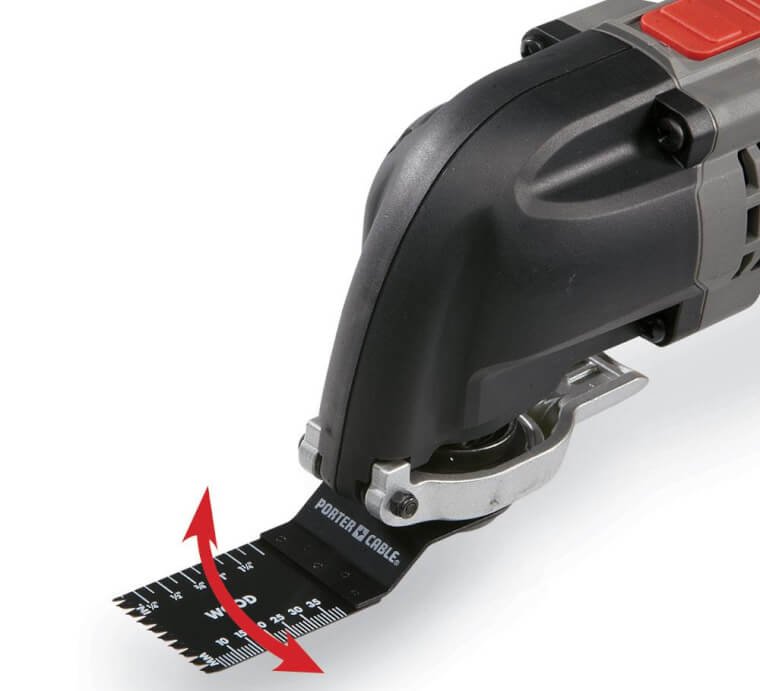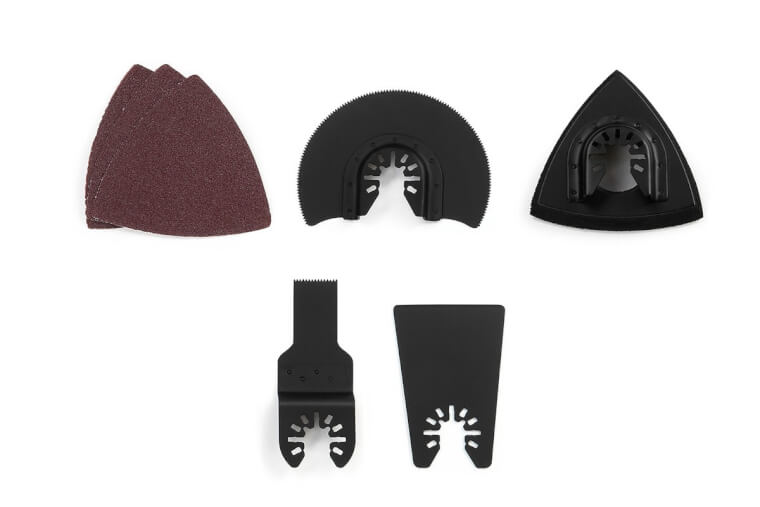An oscillating tool, also known as an oscillating multi-tool is a handheld multi-purpose power tool designed to perform a wide range of jobs on a wide range of materials such as wood, aluminum, tile and plastics.
When it comes to versatility there is no beating an oscillating multi-tool, truly a must-have tool for professionals, everyday hobbyists and occasional DIYers. So how does it work, what does it do and why should you buy one? Continue reading to find out, and more!
How does an Oscillating Tool Work?

However, they are typically capable of 15,000 – 20,000 oscillations per minute (OPM), with some top end models even reaching 25,000 OPM. The result is a powerful motion that with the appropriate attachment makes this tool able to tackle a huge variety of jobs, some of which we will explore next.
What does an Oscillating Tool do?
There is a good reason this tool is commonly referred to as a multi-tool. The king of versatility, the possibilities are endless. Take a look below at some of the many jobs an oscillating multi-tool is suitable for.
- Straight Edge Cuts: Of course an oscillating tool can perform simple straight edge cuts for those times you need a quick and precise cut on an oversized piece of trim.
- Removing Old Paint: Painting can breath new life into an object or room but only when done correctly. Painting over aged and weathered surfaces can severely affect the look of the finished product. An oscillating tool is brilliant at removing old paint readying any surface for its new look.
- Unique Sanding Jobs: When sanding you will often be faced with objects such as doors that feature long narrow edges. The triangular sanding pad and narrow ergonomic design featured on an oscillating multi-tool are perfect for smoothing such surfaces.
- Grout Removal: Oscillating tools are perfect for getting to and removing grout between tiles without making a huge mess or damaging the tiling in the process.
There is almost no limit to the number of possibilities an oscillating multi-tool can offer. However, this is just a brief glimpse of its true capabilities. If you would like a more in-depth look at all the different uses for an oscillating tool, check out our guide.
What Accessories Do They Usually Come With?
Oscillating multi-tools often come with a variety of blades and sanding sheets. Typical blade attachments include:
- Wood cutting blades: For cutting through soft and hardwoods
- Scraper blades: To scrap unwanted material from the surface of your work
- Straight edge blades: Ideal for plunge cuts, where you need to stab the blade into the material that needs to be cut.
- Semi-circular/round blades: Best suited for long, linear cuts where it can produce a smooth and clean cut.
- Grout removal blades: Great for removing the grout between tiles.
- Wide-edged blades: These help prevent slippage when cutting cylindrical material.
Triangular sanding pads designed for metals, wood and tiles are also typically included, along with a scouring cloth for cleaning dirt from the surface of metals and tiles.
4 Reasons to Choose an Oscillating Tool
- First and foremost you are getting a tool that has been designed to take on not just one specific job role but multiple. As a result, you can end up saving a lot of money from not having to buy several other tools. Of course, specific tools still have their place but if you are interested in a multipurpose tool that is easy to pick up and get smaller jobs done quickly, an oscillating tool is perfect.
- They are also incredibly lightweight and ergonomic making them a joy to use and easy to pick up so you can start working right away.
- Another important benefit of an oscillating multi-tool is its ability to fit into those otherwise hard to reach spaces. This is made possible due to its ability to attach the accessory in any orientation you see fit, along with its narrow and ergonomic design.
- Finally, the minimal oscillation allows for more precision and zero ‘kick’ as you might expect from some rotating tools.
What to Look Out For When Purchasing an Oscillating Tool
When looking for your ideal oscillating tool there are a few key features you must be on the lookout for to make sure you don’t purchase the wrong one. Here are a few important factors to note.
Oscillation Speed: Tools with a higher OPM rating will cut through material faster. Look for tools with an OPM of at least 18,000.
Tool Vibration: Too much vibration will make the tool hard to use. Look for tools with minimal vibration or anti-vibration grips to ensure ease of use.
Oscillation Angle (Range of Motion): The amount of range at which the tool oscillates will affect how aggressively it cuts. For example, 1 degree to either side may offer too little range of motion for you and result in poor performance. Look for tools with a minimum range of 1.5 degrees to each side.
Corded v Cordless: Corded still remains the go-to choice due to its added power and reliability, however, if going cordless is a must for you there are still some good options out there. Make sure you pay attention to the customer reviews to ensure you are getting a trustworthy tool for your money.
There you have it, all the information you could possibly need regarding an oscillating multi-tool. They really are a tool you should not be without and will inevitably become a staple in your arsenal of tools once you begin to use one. You might also find new and unique ways to use it for your own benefit!
Take a look at our list of oscillating tool reviews to help find the best one for you.
It goes without saying what an excellent investment an oscillating multi-tool is and I would urge everyone to get one and try it for themselves. There really is nothing that matches it when it comes to value for money in the world of power tools.

Reader Interactions